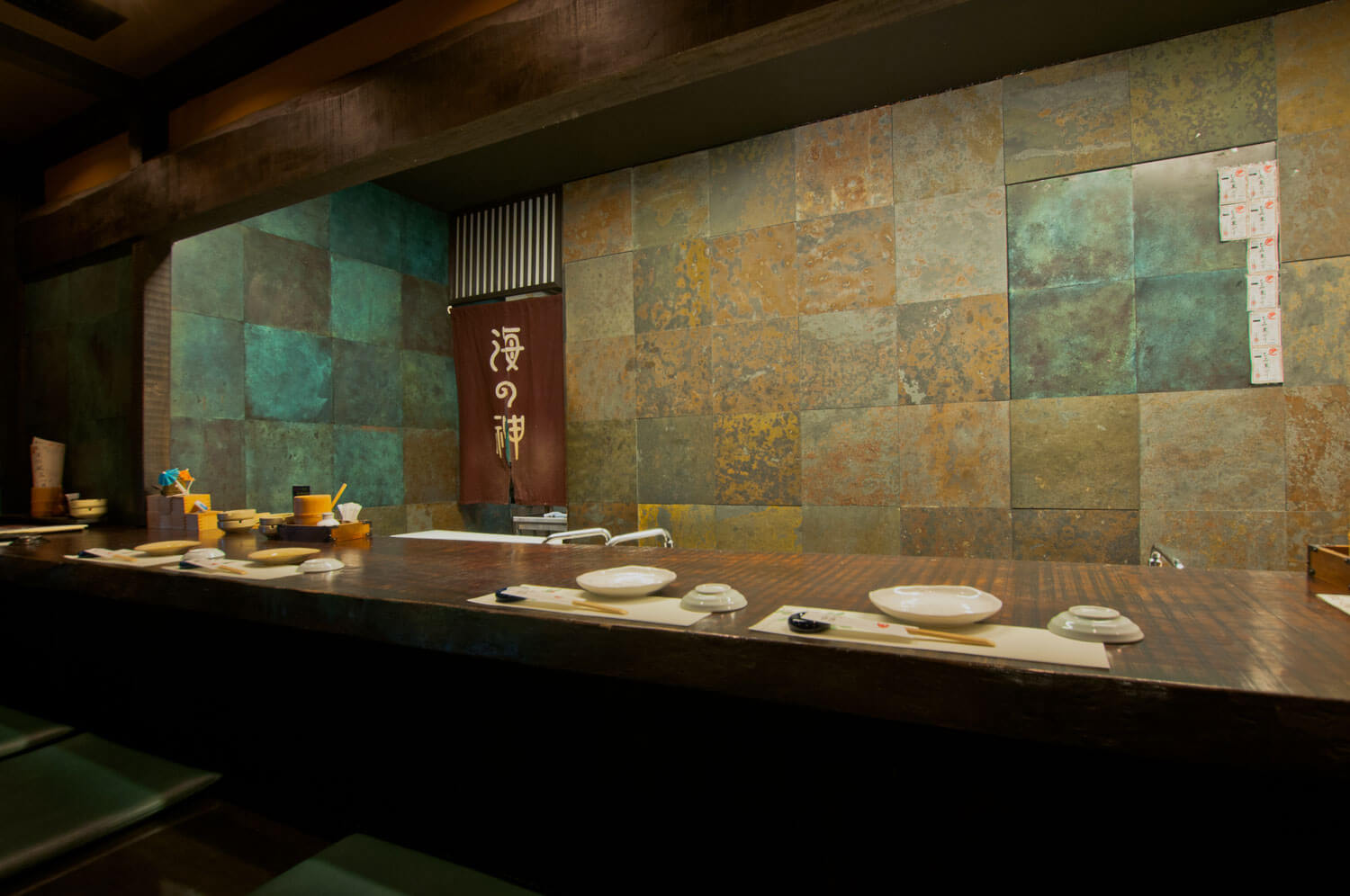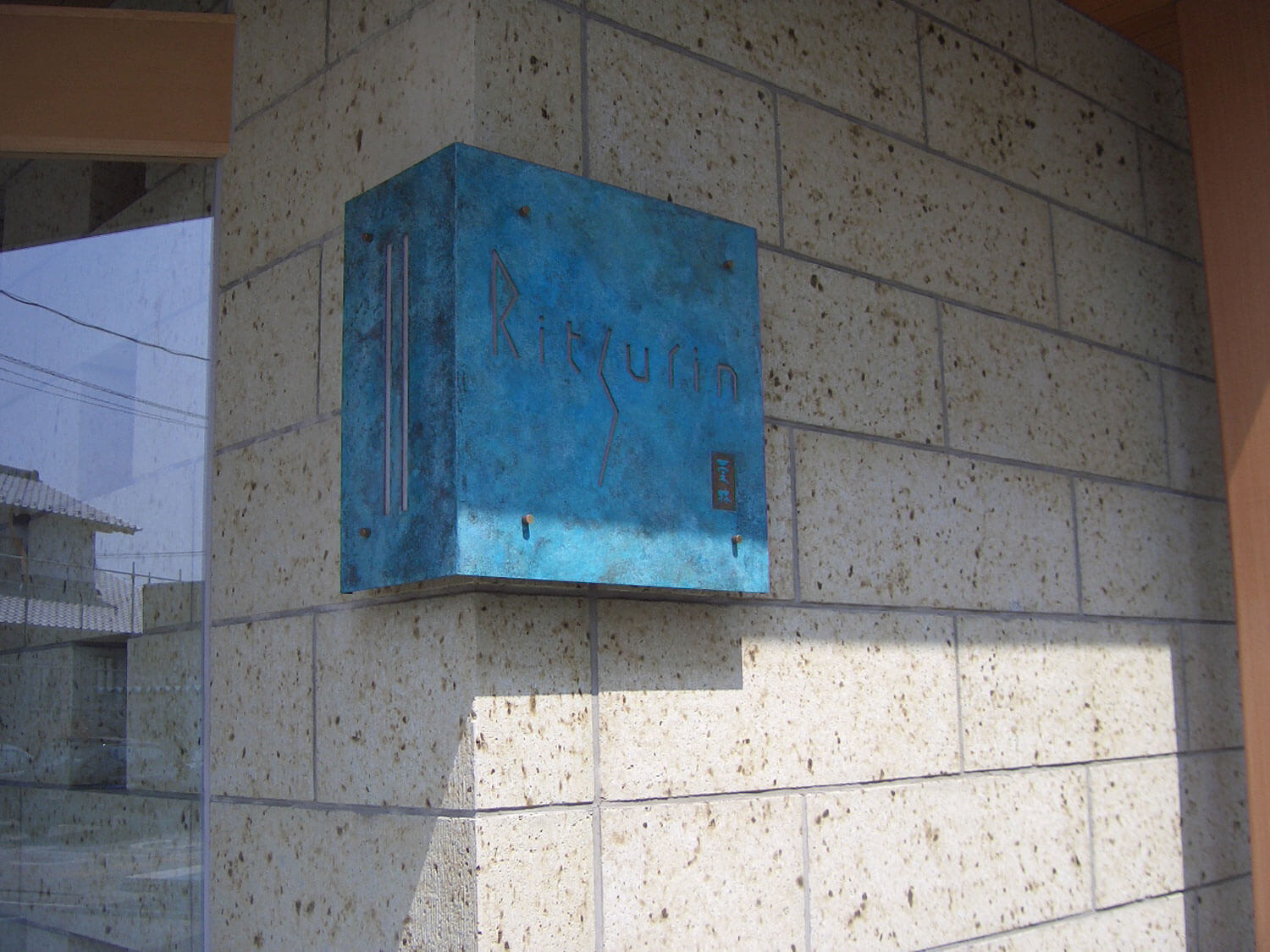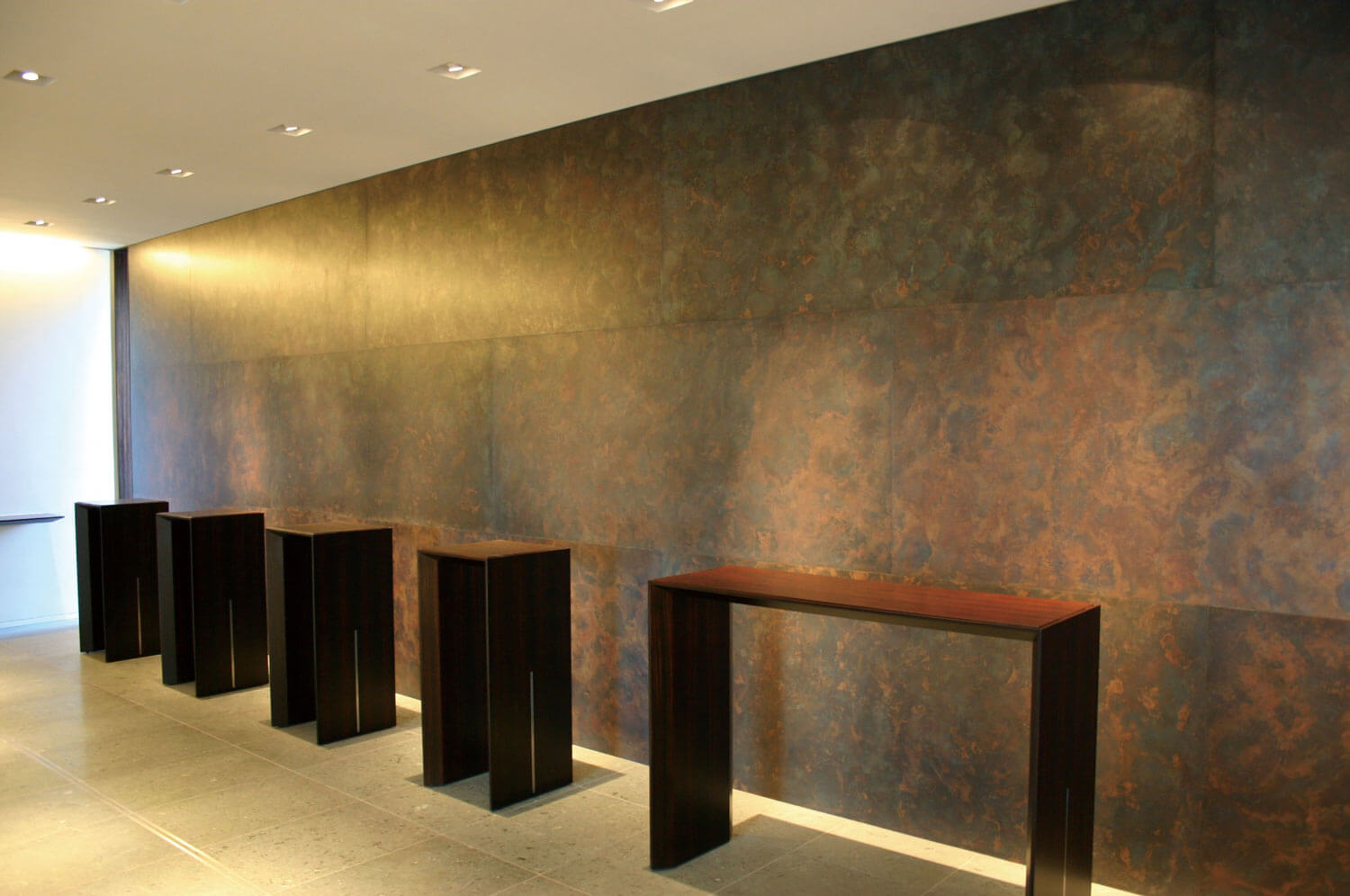Koji Orii, Alchemist of Turquoise Copper
Hailing from a family of copper smelters, the artisan developed a technique for colouring metal that established his reputation.

© momentum factory Orii, Co.,Ltd.
In Toyama Prefecture lies the city of Takaoka, where a handful of artisans continue the tradition of metalwork that dates back 400 years. These include the creators of Nousaku and Koji Orii, director of momentum factory Orii.
The latter developed a technique that allowed him to create blue copper, from which he makes architectural pieces for buildings in Japan, as well as everyday objects like clocks, phone casings, and earrings.
A unique technique that arose from the bursting of the economic bubble
Koji Orii comes from the third generation of a family of copper alloy smelters and took up the baton just as the Japanese economic bubble burst, between 1986 and 1990. This triggered a decrease in demand for Buddhist accessories, which, until that point, had been produced by his family (and by the majority of the other companies in the area).
The artisan realised that he needed to differentiate himself from the competition. And so began two years of intense experimentation through trial and error, leading him to develop his own unique colouring technique. In his workshop, copper is coated with a plethora of shades from blue lagoon to dark brown. Commercial success was just around the corner.
The artisan-colourist strives to satisfy the growing demand from the world of architecture and interior design. Koji Orii may not turn lead into gold, but he certainly reinjects some colour into a centuries-old tradition.
Koji Orii’s work can be viewed on his website and on his Instagram account.

© momentum factory Orii, Co., Ltd.

© momentum factory Orii, Co., Ltd.
TRENDING
-
The Tattoos that Marked the Criminals of the Edo Period
Traditional tattoos were strong signifiers; murderers had head tattoos, while theft might result in an arm tattoo.

-
Paris, Tokyo: Robert Compagnon
With his co-chef and talented wife, Jessica Yang, Robert Compagnon opened one of the top new restaurants in Paris: Le Rigmarole.
 3:31
3:31 -
The Story of Sada Yacco, the Geisha who Bewitched Europe
Described by Dazed magazine as the first beauty influencer, she has been restored to her former glory since 2019.

-
Ito Jakuchu's Naturalist Paintings
From 15 September until 14 October 2018, the Petit Palais showcased the artist's iconic ‘Images of the Colourful Realm of Living Beings’.

-
Chiharu Shiota, Red Threads of the Soul
Last year, more than 660,000 people visited the retrospective 'Chiharu Shiota: The Soul Trembles' exhibit at the Mori Art Museum.





